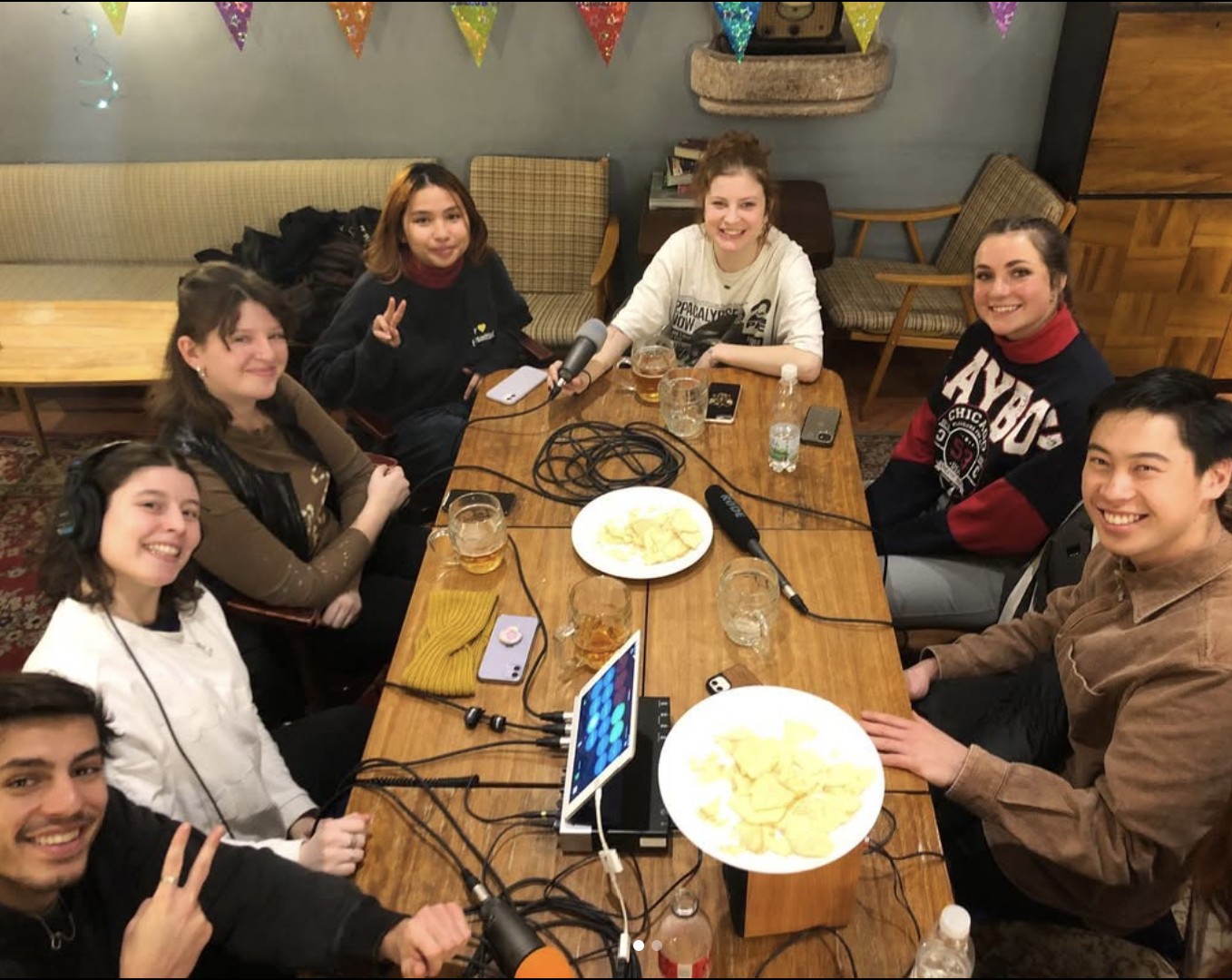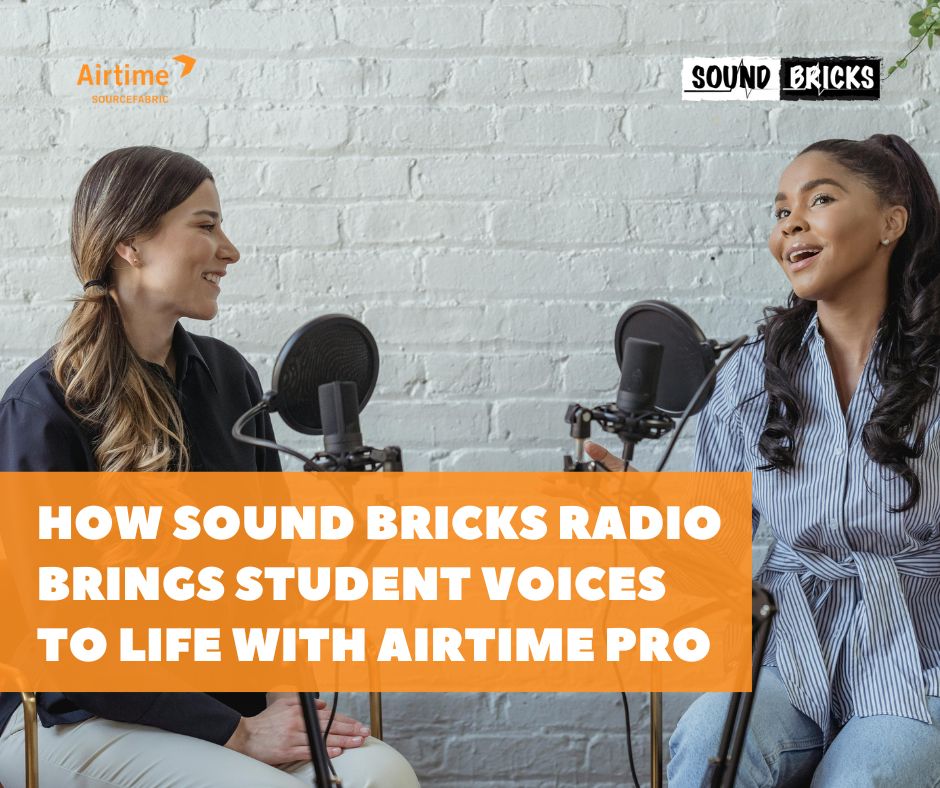For nearly a decade, Sound Bricks, a campus radio station in Prague, Czech Republic, has been broadcasting the musical tastes, opinions and ideas of Anglo-American University students. Launched by Sourcefabric co-founder Douglas Arellanes, a radio host and longtime lecturer at the school, the station has become an integral part of the student experience. In this case study, Arellanes shares insights for those looking to build or improve a student-run radio station and explains how they benefit from using Airtime Pro, the software engine behind Sound Brick’s global reach.
Just another brick in the wall
The station’s name, Sound Bricks, is a tribute to the Lennon Wall in Prague, a historic symbol of free speech during the communist era. This reflects the station’s mission to give students a platform to express what matters to them with full creative freedom. Sound Bricks serves as a space for sharing opinions, ideas, and personal perspectives, while celebrating a love for music from all genres, generations, and corners of the world.

A Station Built on Airtime
From the very beginning, Sound Bricks has relied on Sourcefabric’s internet radio software, Airtime Pro, to manage its broadcast schedule, live shows, and archives.
Each semester, students are tasked with producing eight one-hour programmes, with complete creative freedom. The semester begins at the start of September, with the first shows airing towards the end of the month. From music and interviews to talk shows and niche interests such as rock climbing, no topic is off-limits. One student even recorded interviews while climbing a rock wall, turning a technical challenge into a unique broadcasting style.
Although live broadcasts pause during the summer, the station stays active year-round thanks to Airtime Pro’s scheduling features. When no live shows are scheduled, Sound Bricks uses AutoDJ, allowing the software to randomly select pre-recorded shows from the archive to replay them, ensuring there’s always something playing on the online radio station.
For live events outside the studio, Sound Bricks uses equipment to broadcast on location. Thanks to apps such as Backpack Studio, students can easily broadcast live directly from their phones. This has proven especially useful for breaking news coverage. For instance, during protests near the university, Backpack Studio was used to connect remotely to the Airtime Pro system and broadcast live from the scene. This seamless integration of tools allows the station to respond quickly and effectively to current events.
Arellanes emphasised the importance of live broadcasting: “Being able to go live from anywhere, at any time, is something we’ve used quite a bit. We’ve had students simply go for a walk around Prague and talk about whatever they see along the way.”
Navigating Challenges
Sound Bricks faced challenges during the COVID-19 pandemic, but Airtime Pro’s web-based interface made it possible to keep broadcasting.
“The distributed nature of the system proved invaluable during the pandemic, when everyone was working from home,” said Arellanes. “Students recorded their shows at home using Audacity, uploaded them to Airtime, and for live shows, we used Zoom. I routed the audio from Zoom directly into Airtime.”
A Typical Day at the Station
On a typical Wednesday, live broadcast day at Sound Bricks, preparations begin an hour before the show. Arellanes arrives early to set up the microphones, test the equipment, and ensure the mic mixer is working properly. Students then rotate through different production roles – one acts as the engineer, another handles the Instagram Live stream, and usually two take on the role of hosts. This collaborative approach helps students gain hands-on experience in every aspect of a live radio broadcast.
Sound Bricks maintains a presence on Instagram at @sbprague, where updates and behind-the-scenes moments are shared. During live broadcasts, the team also simulcasts on Instagram Live, giving followers another way to tune in.
Why Radio Still Matters
When asked what advice he would give to a student-run organisation, Arellanes said:
“Radio is an iterative process — it doesn’t have to be perfect from day one. You only get better by doing it. So just get out there and start.
Sound Bricks teaches students to think critically about media in an age dominated by digital platforms and artificial intelligence.
“When Spotify has 100 million tracks and perfect algorithms, why do we need humans? The answer is: humans are weird, poetic, insightful, angry, emotional. The shows emphasise that human touch.”
Whether it’s broadcasting from a classroom, a climbing wall, or the middle of a protest, Sound Bricks shows what’s possible when creative freedom meets accessible technology and a supportive infrastructure.
Interested in starting your campus radio? Try Airtime Pro today and take your broadcasts to the next level with easy scheduling and live streaming.
7 day free trial Plans from $9.95/mo


Leave a Reply